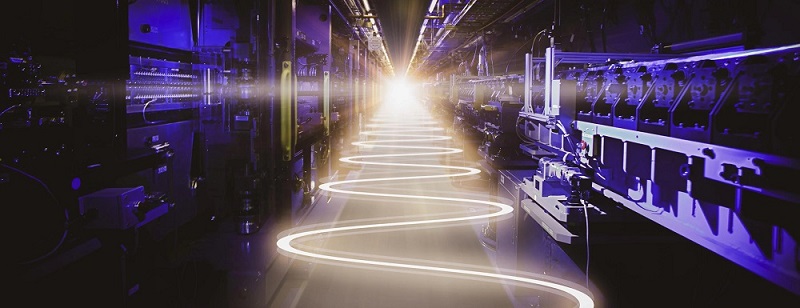
SLAC’s Upgraded XFEL Registers 'First Light'
SLAC National Accelerator Laboratory reported that the Linac Coherent Light Source (LCLS) x-ray free-electron laser (XFEL) has produced its first x-rays following a $1.1 billion upgrade. The improvements, more than 10 years in the making, allow the laser to fire up to a million x-ray flashes per second, which is 8000 times more than its predecessor. The generated, almost-continuous x-ray beam will be 10,000 times brighter than its predecessor on average.
LCLS-II will enable researchers to explore the details of quantum materials with unprecedented resolution to drive new forms of computing and communications; reveal unpredictable and fleeting chemical events relevant to sustainable energy; study how biological molecules carry out life’s functions to develop new types of pharmaceuticals; and study the world on the fastest timescales to open up entirely new fields of scientific investigation.

The Linac Coherent Light Source achieved first light after a $1.1 billion upgrade that enables the laser to produce up to a million x-ray flashes per second, at 10,000 times the brightness of its predecessor. Courtesy of SLAC National Accelerator Laboratory.
By capturing atomic-scale snapshots of chemical reactions at the attosecond timescale — the scale at which electrons move — LCLS-II will also provide insights into chemical and biological reactions, leading to more efficient and effective processes in industries ranging from renewable energy to the production of fertilizer and the mitigation of greenhouse gases.
Central to LCLS-II’s enhanced capabilities is its revolutionary superconducting accelerator. It comprises 37 cryogenic modules that are cooled to minus 456 ºF — colder than outer space — a temperature at which it can boost electrons to high energies with nearly zero energy loss. The superconducting accelerator works in parallel with the existing copper one, allowing researchers to make observations over a wider energy range, capture detailed snapshots of rapid processes, probe delicate samples that are beyond the reach of other light sources, and gather more data in less time, greatly increasing the number of experiments that can be performed at the facility.
In addition to its accelerator, the LCLS-II contains new components including an electron source, two cryoplants that produce refrigerant for the niobium structures in the cryomodules, and two undulators to generate x-rays from the electron beam. Advancements also span laser technology, ultrafast data processing, and advanced sensors and detectors.
Published: September 2023